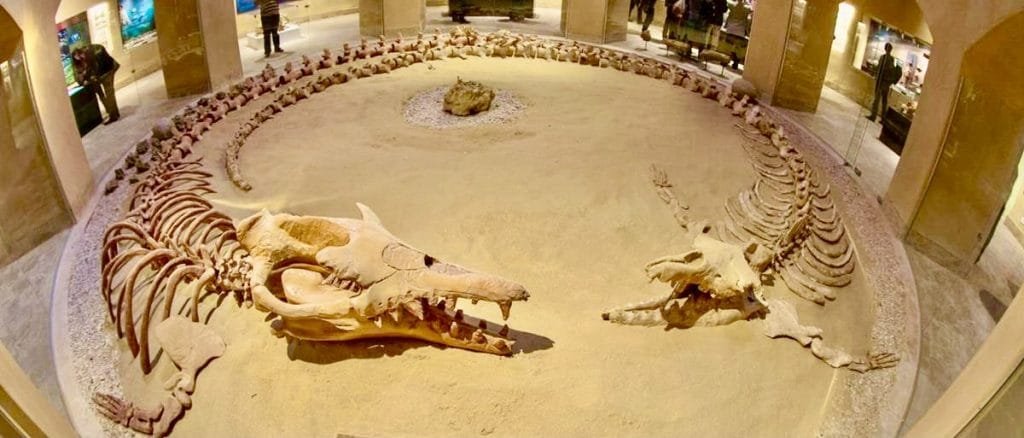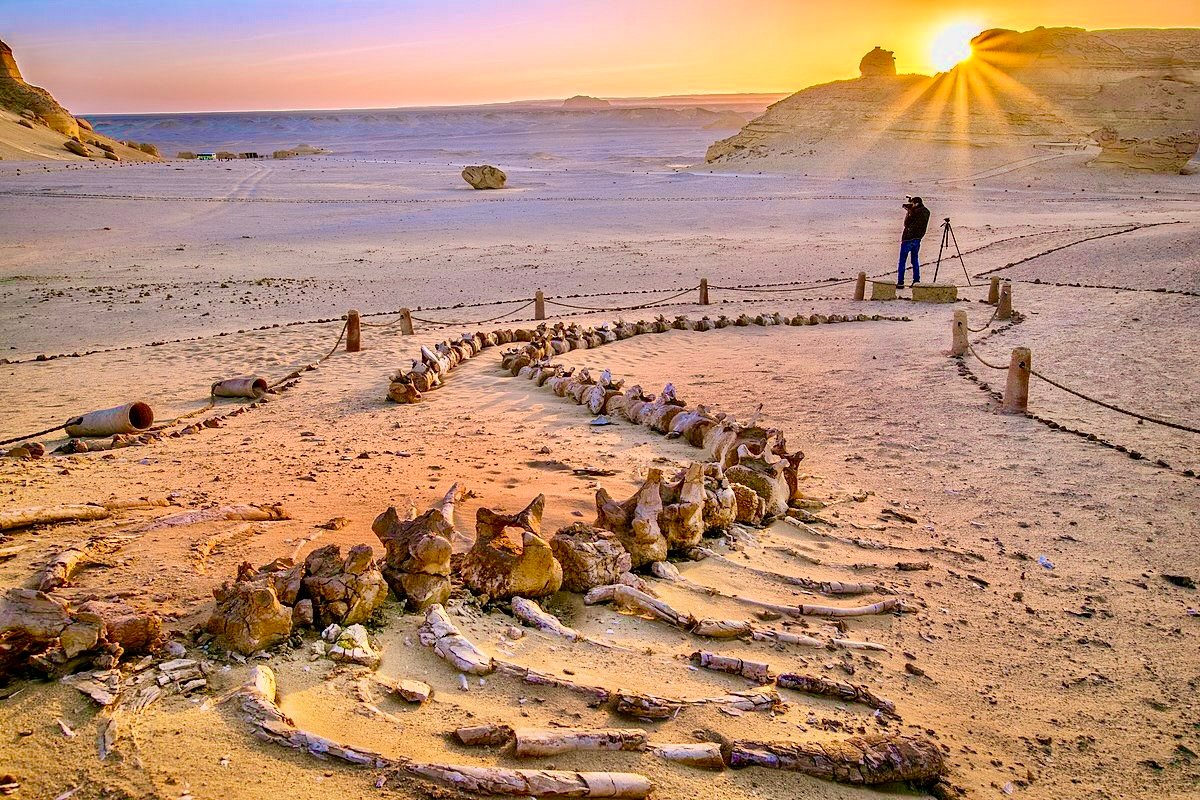Last Updated on 2 years ago by Michael William
Click here to Choose your Next Cheap Tour To Egypt The Price Starts From $25
Introduction: A Journey into Egypt’s Ancient Marine History
Welcome to the Wadi Al-Hitan Fossil and Climate Change Museum! This incredible museum is located within the stunning Al-Fayoum Oasis, a UNESCO World Heritage Site. Here you will discover an amazing trove of fossils from millions of years ago that tell us so much about our planet’s ancient marine life. Through this comprehensive guide, we invite you to explore Wadi Al-Hitan’s captivating history, significance, and role in understanding climate change – it truly is an extraordinary experience!
1. Unearthing the Secrets of Wadi Al-Hitan’s Prehistoric Whales
As you venture into Wadi Al-Hitan, you’ll be transported back in time to an ancient world teeming with majestic marine life. Here, you’ll discover the remains of whales that once roamed the vast Tethys Ocean, which covered Egypt approximately 40 million years ago. These prehistoric whales, such as Basilosaurus and Dorudon, offer invaluable insights into the evolution of whales and the history of life on Earth.

2. The Fossil and Climate Change Museum: Showcasing Egypt’s Ancient Marine Life
The Fossil and Climate Change Museum at Wadi Al-Hitan is an amazing place to explore the rich history of Whale Valley. It’s a great way to learn about the ancient marine inhabitants that once roamed this area, with interactive displays, 3D models, and multimedia presentations making it easy for visitors to understand what life was like in those times. Plus there are some incredible fossil exhibits on display showcasing some of the most significant discoveries made in this region – definitely something worth seeing! So if you’re looking for a unique experience that combines education and entertainment then be sure to check out this state-of-the-art museum!

3. The Role of Wadi Al-Hitan in Climate Change Research
Wadi Al-Hitan holds immense value not only for paleontologists but also for climate change researchers. The geological record preserved in the Whale Valley’s sediments provides a unique window into the Earth’s climatic history during the Eocene epoch. By studying the fossils and rock formations, scientists can gain a deeper understanding of past climate conditions and their impact on marine life, which in turn informs our understanding of contemporary climate change.
4. The Wadi Al-Hitan Experience: Guided Tours and Hiking Trails
A visit to Wadi Al-Hitan is a truly immersive experience, offering guided tours and hiking trails that allow you to fully explore the beauty and wonder of this extraordinary site. Trained guides will lead you on an unforgettable journey through the fossil-rich landscape, where you can witness firsthand the remarkable remains of prehistoric whales and other marine life that once thrived in the Tethys Ocean.
Read more: Wadi El Rayan: Discover Old Oasis in Egypt’s Faiyum Region
5. The Stunning Natural Beauty of Wadi Al-Hitan
Wadi Al-Hitan is truly a remarkable place, both for its incredible paleontological significance and its breathtaking beauty. The landscape of Wadi Al-Hitan is one of great drama, with vast sand dunes, towering cliffs, and striking rock formations that have been shaped by the forces of nature over millions of years. To experience this ethereal beauty in person is sure to be an unforgettable experience – you can’t help but be captivated by the stunning views! Whether you’re interested in learning more about ancient life or just looking to take in some beautiful scenery, Wadi Al-Hitan should definitely not be missed.
6. Wadi Al-Hitan’s Unique Flora and Fauna
Wadi Al-Hitan is an amazing place, full of beauty and life. Not only does it contain vast collections of paleontological treasures, but it also boasts a unique desert ecosystem that supports a variety of plant species such as acacia trees and desert shrubs. The Whale Valley serves as the perfect sanctuary for numerous bird species including migratory birds that flock to the area seasonally. For those wildlife enthusiasts out there, you can expect to catch glimpses of desert foxes, hares, and various reptiles all living in harmony within Wadi Al-Hitan’s boundaries!

7. Planning Your Visit to Wadi Al-Hitan: Practical Information
To fully appreciate the wonders of Wadi Al-Hitan, it is essential to plan your visit carefully. The site is located approximately 150 km southwest of Cairo and can be reached by car or through organized tours. The best time to visit is during the cooler months of October to April, as temperatures can soar during the summer months. It is recommended to allocate a full day for your visit to explore the Fossil and Climate Change Museum and the surrounding landscape at a leisurely pace.
Conclusion: The Timeless Allure of Wadi Al-Hitan
In conclusion, Wadi Al-Hitan is a remarkable destination that offers visitors an unforgettable experience. From its unparalleled fossil discoveries to its breathtaking natural beauty, the Whale Valley is truly one of a kind. It’s an incredible opportunity to step back in time and explore Egypt’s ancient marine history while also being reminded of the importance of protecting our planet for future generations. Don’t miss out on this unique chance to witness Earth’s prehistoric past – visit Wadi Al-Hitan today!
FAQs
Q1: How long does it take to explore the Wadi Al-Hitan Fossil and Climate Change Museum?
A1: It is recommended to allocate at least half a day to explore the museum and the surrounding fossil trail. However, you may want to spend more time if you’re particularly interested in natural history, paleontology, or climate change.
Q2: Is the Wadi Al-Hitan Fossil and Climate Change Museum suitable for children?
A2: Yes, the museum is family-friendly and offers engaging exhibits and educational programs that cater to visitors of all ages. Children will enjoy learning about ancient marine life and the importance of conservation through interactive displays and activities.
Q3: Are there any facilities or amenities at the Wadi Al-Hitan Fossil and Climate Change Museum?
A3: The museum features a visitor center with restrooms, a gift shop, and a small café. However, it’s a good idea to bring your own food and water, especially if you plan on spending a significant amount of time exploring the fossil trail.

